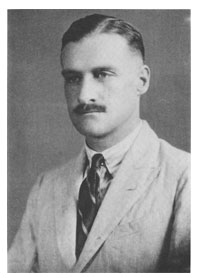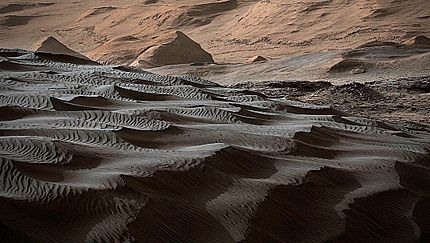Ralph Bagnold facts for kids
Quick facts for kids
Ralph Alger Bagnold
|
|
|---|---|
 |
|
| Born | 3 April 1896 Plymouth, Devon, England
|
| Died | 28 May 1990 (aged 94) |
| Known for | desert exploration, aeolian research, founding Long Range Desert Group Bagnold number |
| Spouse(s) | Dorothy Alice Bagnold |
| Military career | |
| Service/ |
|
| Years of service | 1915−1944 |
| Rank | Brigadier (Honorary) |
| Service number | 10231 |
| Unit | Royal Engineers Royal Corps of Signals |
| Battles/wars | First World War Second World War |

Ralph Alger Bagnold (born April 3, 1896 – died May 28, 1990) was an amazing English explorer, scientist, and soldier. He was known for his exciting trips into the desert and his important studies on how sand moves. His work even helped NASA learn about the planet Mars.
During World War II, he started a special army unit called the "Long Range Desert Group". This group explored deep into the desert behind enemy lines. They gathered information and carried out surprise attacks.
Contents
Early Life and Adventures
Ralph Bagnold was born in Devonport, England. His father was a soldier in the Royal Engineers. He even went on a rescue mission in Sudan. Ralph's sister was Enid Bagnold, a famous writer who wrote the book National Velvet.
Ralph went to military school and joined the Royal Engineers in 1915. He fought in the trenches in France during World War I. He was recognized for his bravery.
After the war, he studied engineering at University of Cambridge. Then he rejoined the British Army. He served in places like Cairo, Egypt, and India. During his free time, he loved exploring the deserts nearby. In 1929, he used a Ford Model A car and two trucks to search for a legendary lost city called Zerzura in the desert.
Exploring the Desert by Car
Bagnold and his friends were among the first to use cars to explore huge deserts. In 1932, he made the first recorded trip across the Libyan Desert from east to west. He even found ancient tools from the Stone Age in a valley called the Mourdi Depression.
He wrote a book about his adventures called Libyan Sands: Travel in a Dead World. He also invented a special sun compass. This compass worked better in the desert because it wasn't affected by large iron rocks or metal vehicles. His group also learned to lower their tire pressure when driving on soft sand. This helped their vehicles move more easily.
Bagnold also figured out a way to drive over huge sand dunes. He described it like floating up on a "yellow cloud." But he also knew it was dangerous. If you went too fast, you could plunge over the other side! A silent film about his desert trips can be found at the British Film Institute.
World War II and the Long Range Desert Group
When World War II started in 1940, Ralph Bagnold was in Cairo. He knew his desert knowledge could help the British Army. He met with General Archibald Wavell and suggested forming a special unit. This unit would use his desert skills to scout and fight against the Italian forces in Libya.
General Wavell agreed, and in July 1940, the "Long Range Desert Group" (L.R.D.G.) was formed. Bagnold was its first leader. This group became famous for its daring missions deep behind enemy lines. They gathered important information and carried out surprise attacks. Bagnold led the L.R.D.G. until August 1941. He then became the Inspector of Desert Troops.
He retired from the army in 1944 after the war in North Africa ended. He then went back to his scientific studies.
Later Scientific Work
After the war, Bagnold continued his important scientific work. He studied how sand moves and forms shapes like dunes and ripples. He even created something called the "Bagnold number" and "Bagnold formula". These help scientists understand how sand flows. He also studied "singing sands", which are dunes that make musical sounds.
His work was recognized with many awards:
- The G. K. Warren Prize in 1969.
- The Wollaston Medal in 1971, which is a very high award in geology.
- The David Linton Award in 1981.
- The Penrose Medal in 1970.
He also received honorary science degrees from two universities.
Personal Life and Legacy
Ralph Bagnold married Dorothy in 1946. They had a son and a daughter. He lived in Edenbridge, England, in his later years. He passed away on May 28, 1990, at the age of 94.
His work on sand movement is still used today. NASA even named a dune field on Mars after him, the Bagnold Dunes. This shows how important his discoveries were for understanding deserts, both on Earth and beyond!
Honours and Awards
- Founder's Medal of the Royal Geographical Society, 1935
- Officer of the Order of the British Empire (OBE), 1941
- Recognized for bravery in military reports in 1917, 1931, and 1941
- Knight, Order of Leopold with palm (Belgium), 1919
See also
- Aeolian processes
- Bagnold formula
- Bagnold number
- Long Range Desert Group
Images for kids


